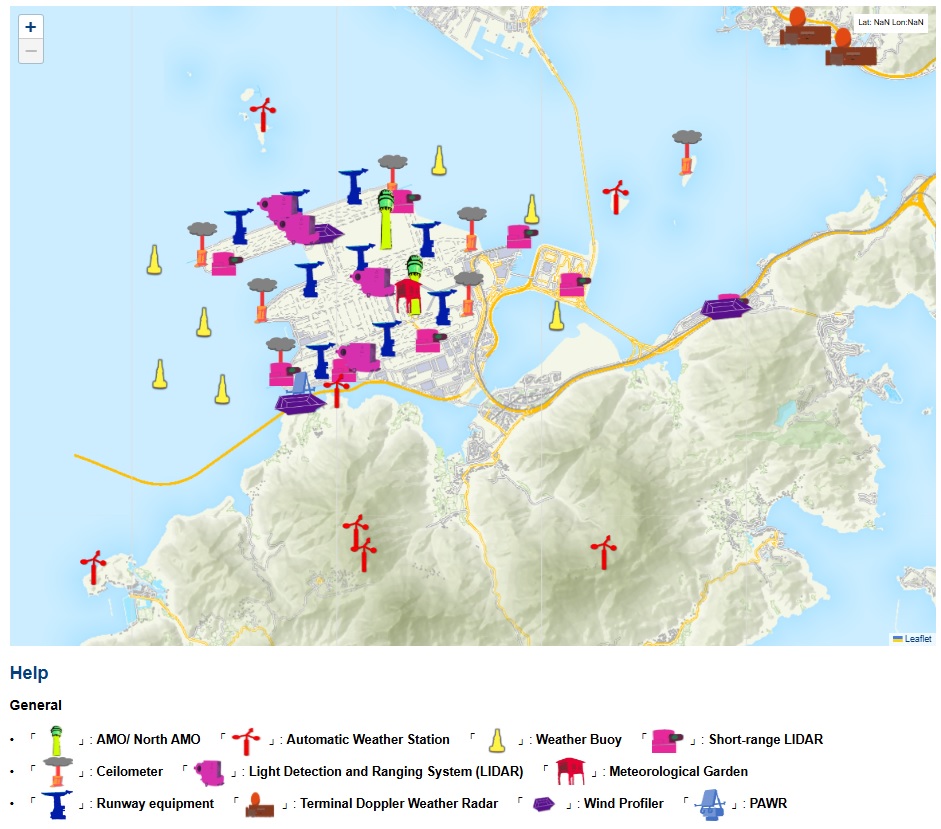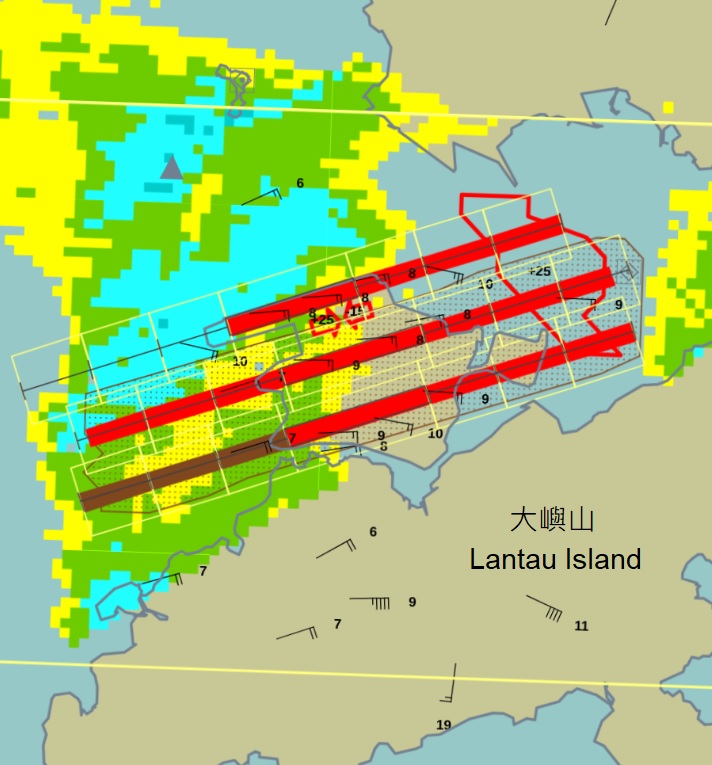Windshear and Turbulence Warning Service
BackgroundGeographically, the Hong Kong International Airport (HKIA) was built on reclaimed land to the north of the rather mountainous Lantau Island which has peaks rising to nearly 1,000 m with valleys as low as about 400 m in between. To the northeast of HKIA, there are a number of smaller hills with peaks rising to between 400 and 600 m. Under this coastal and hilly environment, a wide variety of weather phenomena can bring windshear and turbulence to HKIA. These include: |
|
Weather Sensors for Monitoring of Windshear and TurbulenceWeather sensors for monitoring windshear and turbulence in and around HKIA include:
|
 Location map of weather sensors for windshear and turbulence monitoring Click for a tour to the meteorological stations |
Windshear and Turbulence AlertsAlerts for possible low-level windshear and turbulence within 3 nautical miles of runway ends are automatically generated using data from a suite of weather sensors. These alerts are updated at a frequency of at least once per minute for relay to aircraft. The geographical distribution of windshear and turbulence is displayed on graphical displays for air traffic control supervisors and aviation forecasters.To supplement the automated alerts, actual pilot reports of windshear and turbulence encountered below 500 m are also issued as alerts for broadcast on the Automatic Terminal Information Service (ATIS) to ensuing aircraft. The aviation forecasters also issue windshear warnings utilizing data from the suite of weather sensors (including the broad prevailing meteorological conditions, the real time data from detection systems, and the aircraft reports provided by pilots through air traffic controller and by the Aircraft Meteorological Data Relay (AMDAR) data received automatically from air-ground data link). In the past few years, the rate of successful detection of windshear events was about 90%. |
 Display of graphical windshear alerts |
Educational Materials on Windshear and TurbulenceWindshear and Turbulence pamphlet for members of the public (in pdf format)
Windshear and Turbulence in Hong Kong - information booklet for pilots, Latest Edition (in pdf format) Disclaimer
Ongoing research in Hong Kong has led to improved wind shear and turbulence alerts - Hong Kong Observatory article published in ICAO Journal, March 2003 (in pdf format)
HKO/IFALPA/WMO/ICAO Windshear Posters (in pdf format)
|
|